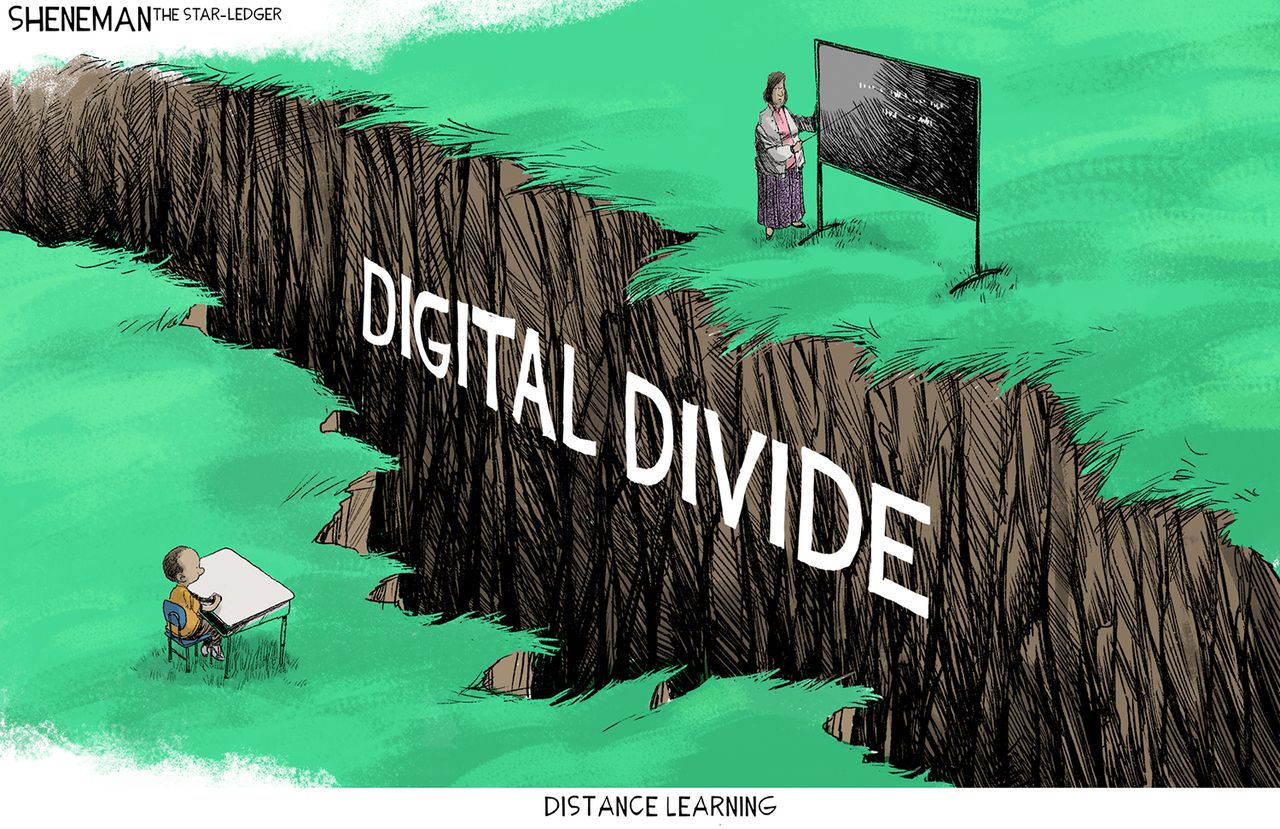Digital Divide
Deals with “To Have and Have Not” in relation to Computers, Internet, or Technology in general
- Poorer or rural areas in America and other countries may have less or little access to Technology
- Some countries may have different or restricted access, for instance China and USA may have divide in service allowed in their countries.
Contributing factors to divide are socioeconomic (money), geographic (location), demographic (education, nationality, religion, and ethnicity)
- Individual may have less access to latest updates, thus may be working on older generations of computers
- Religious groups like the Amish choose not to use technology
- San Diego county has regional distinction in many categories between Northern and Southern population, usually indicated by Interstate 8.
- Sunnyvale CA has been know as technology hub of influence for the entirety of the United States.
At the start of pandemic 90,000 school children in New Jersey did not have access to computers capable of distance learning

In education equity requires school to provide materials like Computers or Chrome books. Here is some counter thinking
- In our environment, Del Norte CS preference is that you have your own computer so that you can work away from school.
- In our classroom, internet blockers at router and lack of admin password can make school computer less productive than personally owned computer.
- Education is often concerned about cyberbullying, sexting, or student privacy. What do you think of investments being made in protection versus investments being made in technology education? Are digital fears expanding digital divide?
Blog Post Reflection – Digital Empowerment
- How does someone empower themself in a digital world?
- How does someone that is empowered help someone that is not empowered? Describe something you could do at Del Norte HS.
- Is paper or red tape blocking digital empowerment? Are there such barriers at Del Norte? Elsewhere?


